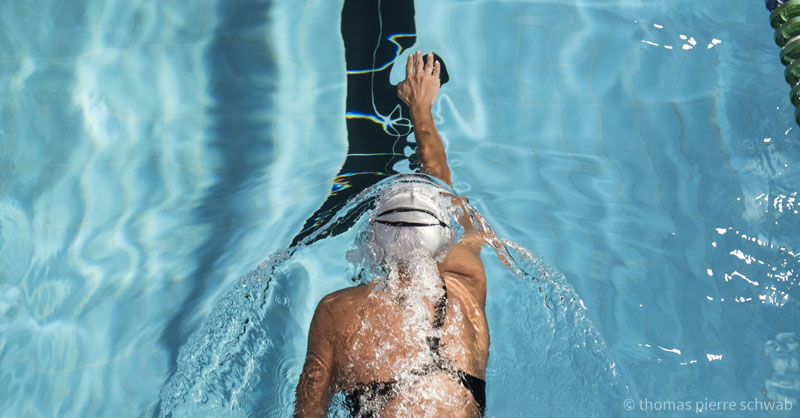You will have certainly heard about alternate freestyle breathing, but have you ever wondered what the real benefits are?
Alternate breathing means breathing every three strokes or, rather, the ability to breathe both sides of the body.
It is important to be taught alternate breathing when you are young, because this will give you:
1. A better balanced stroke. If this basic is overlooked, you are likely to have an asymmetrical swim stroke when you are older.
2. Good propulsion in the water. As mentioned above, alternate breathing gives you better balance and hence less rotation of the shoulders and better forward thrust.
This is extremely important for triathletes, too, and not just swimmers. It allows you to maintain an efficient swim stroke in such disparate situations as waves, swimming around a buoy and/or checking the position of your closest rivals.
Here are some exercises you can include in your training to either learn how to breathe alternately or improve your alternate breathing:
- Learn to count to 3. Everybody knows three is the perfect number. Breathing every stroke would interfere with your balance and body position, while breathing every 5 or 7 strokes is tricky if you are an inexperienced swimmer.
- 8x25m freestyle breathing every 3 strokes, 15” rest
- 6x50m freestyle breathing every 3 strokes for first 25m and every 5 strokes for secondo 25m, 20” rest
- Control your head position. Make sure you rotate your neck and head while breathing but not your shoulders, particularly on the side you are least used to breathing.
- Alternate your breathing. If you find it harder to breathe on one side in particular when breathing every 3 strokes, then try breathing on the same side for 25 m and then swapping sides. Swim 25 m breathing only to the left and then 25 m breathing only to the right. This will help you control your breathing better.
- 8x25m (or 6x50m) using only one arm with the other stretched out in front and focusing on rotating your head. Alternate breathing to the left for 25m and then to the right for 25m
Finally, here is a tip: make sure you do not always breathe every three strokes during particularly tough training sessions. Learn to breathe on both sides, alternating your breathing. First breathe only to the left and then only to the right. This will make your swim stroke more symmetrical and make it easier to keep an eye on your fellow competitors during a race.
—————
